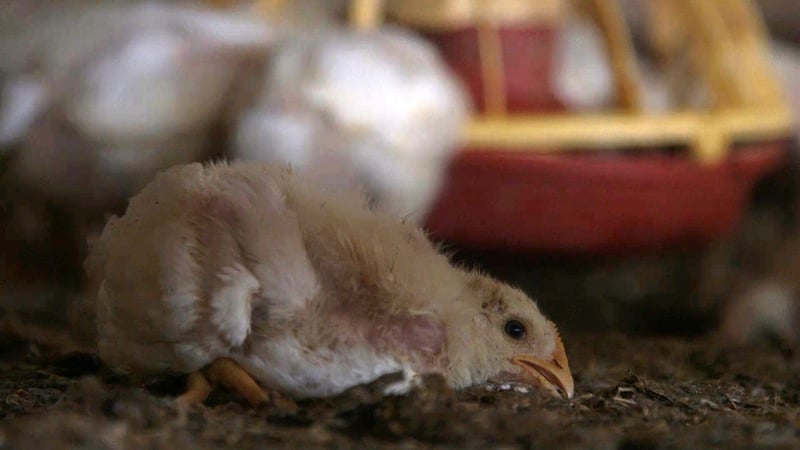
Rats, dogs, chickens and cats – why do we care more about some animals than others?
News
Sentience Manager Helen Proctor discusses speciesism and why we care more about soft, fluffy animals.
The video above features some very lovely rats who have been trained to do all sorts of tricks. Videos like this one always get me excited as they show an animal who is normally seen as a pest, in a new light; as an incredibly intelligent and charismatic, feeling being. Sadly however, countless numbers of rats are killed as pests each year using unregulated and often inhumane methods.
Emotional rats
There is an abundance of research out there on their capacity for emotions, demonstrating a full emotional repertoire that would rival ours (Balcombe, 2010; Proctor, Carder, & Cornish, 2013). For example, researchers have found that rats demonstrate their pain through their facial expressions, just like we do (Sotocinal, Sorge, & Zaloum, 2011).
Research has also found that rats are empathic towards their cage mates. Rats will free their restrained cage mate, even when they are prevented from contact with them. They would even do this when they were offered chocolate (a favourite treat), opting to free their cage mate and then share their chocolate with them (Bartal, Decety, & Mason, 2011). Would you do the same for your friend? Empathy is often something we think just us humans are capable of, but it is not the case.
Despite the ever-growing research into the emotional lives of rats, many still treat them in ways they would never dream of doing to their dogs or cats. For example, rat poison and lethal rat traps are sold widely in pet shops alongside dog toys and treats. Both rats and dogs can feel pain and suffer, and both can experience joy and pleasure. In fact, if you need convincing, then look at the wonderful video below of scientist and Professor Jaak Panksepp, who demonstrates that not only do rats enjoy being tickled by humans and will seek it out, but that they also laugh when they are being tickled (Panksepp & Burgdorf, 2003).
Speciesism
Why is it then that we care more about the feelings of dogs and cats than those of rats, or even farm animal species like chickens? It shouldn’t matter whether the animal in question is fluffy, scaly or feathery, lives in our home or comes on a plate. It also shouldn’t matter whether the animal is intelligent or not. What really matters is whether the animal can feel.
Given that science tells us that all mammals, reptiles, birds and fish, as well as some invertebrates, can feel both emotions and states such as pain (Bekoff, 2005; Proctor, 2012), I feel we should really be treating them all the same, and consider their emotions and needs in the same way we would do so for our pet dogs and cats.
Think of the chicken
Chickens are often thought of as dumb animals, with little capacity to feel. This is certainly not the case, and chickens are far smarter than they are often given credit for. More importantly though, chickens can suffer, and sadly they suffer all too much in many intensive systems.
Chickens are actually quite remarkable animals. When given the choice they can self-medicate when they are in pain, choosing pain-killer laced feed over normal feed when they are lame, and the opposite when they are healthy (Danbury, Weeks, Waterman-Pearson, Kestin, & Chambers, 2000). They even agree with us on the attractiveness of other humans, preferring more beautiful people (Ghirlanda, Jansson, & Enquist, 2002). And if you think all chickens look the same… Well then they have one on you, as they can tell the difference between very similar humans, despite being a different species (Davis & Taylor, 2010).
So next time you think about rats as pests or dismiss chickens as uncharismatic, I do hope you think again. I hope you will remember that rats like to play and they care about others, and that chickens have far more going on than you probably previously thought. Most importantly, rats and chickens want to live a good life.
Further reading
Balcombe, J. (2010). Laboratory rodent welfare: thinking outside the cage. Journal of Applied Animal Welfare Science : JAAWS, 13(1), 77–88. doi:10.1080/10888700903372168
Bartal, I. B. A., Decety, J., & Mason, P. (2011). Empathy and Pro-Social Behavior in Rats. Science, 334(6061), 1427–1430. doi:10.1126/science.1210789
Bekoff, M. (2005). Animal Emotions and Animal Sentience and Why They Matter : Blending “ Science Sense ” with Common Sense , Compassion and Heart. In J. Turner, J; D’Silva (Ed.), Animals, Ethics and Trade: The Challenge of Animal Sentience (pp. 27–40). London: Earthscan.
Danbury, T. C., Weeks, C. A., Waterman-Pearson, A. E., Kestin, S. C., & Chambers, J. P. (2000). Self-selection of the analgesic drug carprofen by lame broiler chickens. Veterinary Record, 146(11), 307–311.
Davis, H., & Taylor, A. (2010). Discrimination between individual humans by domestic fowl ( Gallus gallus domesticus ) Discrimination between individual humans by domestic fowl ( Gallus gallus. British Poultry Science, (October 2011), 37–41. doi:10.1080/0007166012004856
Ghirlanda, S., Jansson, L., & Enquist, M. (2002). Chickens prefer beautiful humans. Human Nature, 13(3), 383–389.
Panksepp, J., & Burgdorf, J. (2003). “Laughing” rats and the evolutionary antecedents of human joy? Physiology & Behavior, 79(3), 533–547.
Proctor, H. S. (2012). Animal Sentience: Where Are We and Where Are We Heading? Animals, 2(4), 628–639. doi:10.3390/ani2040628
Proctor, H. S., Carder, G., & Cornish, A. (2013). Searching for Animal Sentience: A Systematic Review of the Scientific Literature. Animals, 3(3), 882–906. doi:10.3390/ani3030882
Sotocinal, S., Sorge, R., & Zaloum, A. (2011). The Rat Grimace Scale: a partially automated method for quantifying pain in the laboratory rat via facial expressions. Molecular Pain, 7(1), 55.
It shouldn’t matter whether the animal in question is fluffy, scaly or feathery, lives in our home or comes on a plate. What really matters is whether the animal can feel.